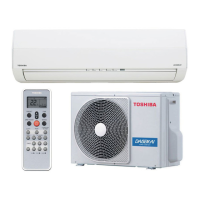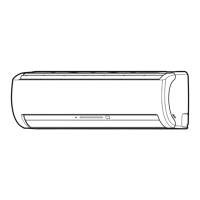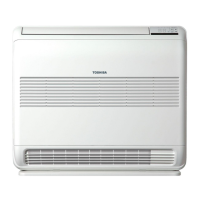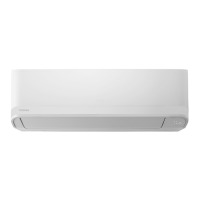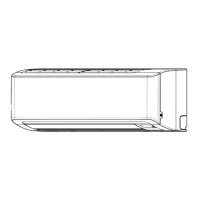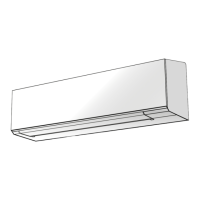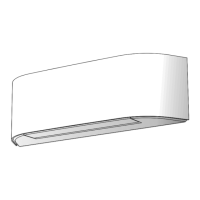E
E
NN
GG
LL
II
SS
HH
NN
EE
DD
EE
RR
LL
AA
NN
DD
SS
AIR CONDITIONERAIR CONDITIONER (SPLIT TYPE)(SPLIT TYPE)
OOWNER’S WNER’S MANUALMANUAL
For general public useFor general public use
CLIMATISEUR (TYPE SEPARE)CLIMATISEUR (TYPE SEPARE)
Pour utilisation grand publicPour utilisation grand public
KLIMAGERÄT (GETEILTE AUSFÜHRUNG)KLIMAGERÄT (GETEILTE AUSFÜHRUNG)
Für allgemeine VerwendungFür allgemeine Verwendung
CONDIZIONACONDIZIONATORE D’ARIA (TORE D’ARIA (TIPO SPLIT)TIPO SPLIT)
Per l’uso in generalePer l’uso in generale
ACONDICIONADOR DE AIRE (TIPO SEPARADO)ACONDICIONADOR DE AIRE (TIPO SEPARADO)
Para el uso público generalPara el uso público general
ΚΛΙΜΑΤΙΣΤΙΚΗΚΛΙΜΑΤΙΣΤΙΚΗΜΟΝΑ∆ΑΜΟΝΑ∆Α ((∆ΙΑΙΡΟΥΜΕΝΟΥ∆ΙΑΙΡΟΥΜΕΝΟΥΤΥΠΟΥΤΥΠΟΥ))
ΓιαΓιαγενικήγενικήδηδηµµόσιαόσιαχρήσηχρήση
AR CONDICIONADO (TIPO SPLIT)AR CONDICIONADO (TIPO SPLIT)
Para utilização geralPara utilização geral
AIRCONDITIONER (TWEEDELIG TYPE)AIRCONDITIONER (TWEEDELIG TYPE)
Voor algemeen publiek gebruikVoor algemeen publiek gebruik
КОНДИЦКОНДИЦИОНЕР ИОНЕР (Р(РАЗДЕЛИТЕЛЬНЫЙ АЗДЕЛИТЕЛЬНЫЙ ТИП)ТИП)
Для общего бытового использованияДля общего бытового использования
IInnddoooor r UUnniitt OOuuttddoooor r UUnniitt
UUnniitté é iinnttéérriieeuurree UUnniitté é eexxttéérriieeuurree
IInnnneennrraauummggeerräätt AAuußßeennggeerräätt
UUnniittà à iinntteerrnnaa UUnniittà à eesstteerrnnaa
UUnniiddaad d iinntteerriioorr UUnniiddaad d eexxtteerriioorr
ΕσωτερικήΕσωτερικήµµοοννάάδδα α ΕΕξξωωττεερριικκήήµµονάδαονάδα
UUnniiddaadde e iinntteerriioorr UUnniiddaadde e eexxtteerriioorr
BBiinnnneennaappppaarraaaatt BBuuiitteennaappppaarraaaatt
ВВннууттрреенннниий й ббллоокк ННаарруужжнныый й ббллоокк
RAS-B10SKVP-ERAS-B10SKVP-E
RAS-B13SKVP-ERAS-B13SKVP-E
RAS-B16SKVP-ERAS-B16SKVP-E
RAS-M10SKCVP-ERAS-M10SKCVP-E
RAS-M13SKCVP-ERAS-M13SKCVP-E
RAS-M16SKCVP-ERAS-M16SKCVP-E
RAS-10SAVP-ERAS-10SAVP-E
RAS-13SAVP-ERAS-13SAVP-E
RAS-16SAVP-ERAS-16SAVP-E
RAS-M14GAV-ERAS-M14GAV-E
RAS-M18GAV-ERAS-M18GAV-E
RAS-M14GACV-ERAS-M14GACV-E
RAS-M18GACV-ERAS-M18GACV-E
Thank you for
Thank you for purchasing this TOSHIBA Air Conditioner. Please read this owner’s manual carefully before purchasing this TOSHIBA Air Conditioner. Please read this owner’s manual carefully before usingusing
your Air Conditioner.your Air Conditioner.
